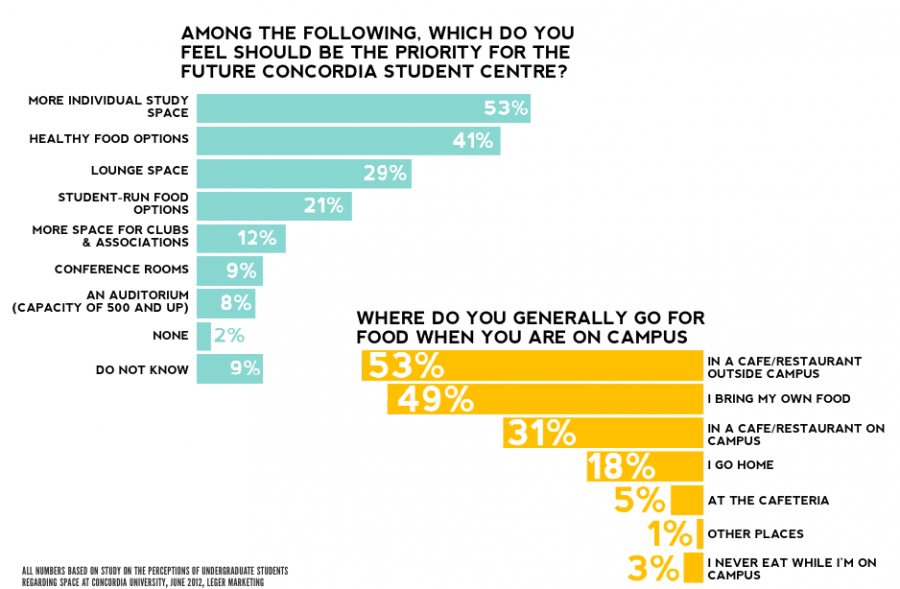Does Concordia Need A Student Centre? Pro
Students at Concordia are divided.
Our complex diversity makes it very difficult to create unity here.
One of the things that this school lacks is that sense of pride, a sense of belonging. For various reasons, it’s really tough to be proud of being a student here. The barrage of golden parachutes, mistreatment of union employees and generally bad PR choices have damaged not only our reputation, but the we feel about our university.
The lack of common space aggravates these feelings.
A study commissioned by the Concordia Student Union and received on Oct. 11, 2012 reported that “two-thirds of Concordia students (67 per cent) say they chose to spend as little time as possible on campus outside class hours.”
It also reported that students wanted more study space, food options, social areas and lounge space.
It’s absolutely unacceptable that students don’t want to spend time on their own campus, and that needs to change.
The commons are valuable places for the diffusion of ideas and crucial to what actually makes a university a university.
These common spaces provide a neutral ground for students from all disciplines to interact in, and without these neutral spaces physical universities lose some of their purpose.
Now, Concordia is a modern school functioning in an urban core, but does our lack of ivy-covered walls really mean that we aren’t the type of school that needs a student centre?
The fluidity of our campus is what makes it unique, but there is also tremendous value in stability.
Concordia just bought up $4.5 million of the Faubourg building to help offset the upward expansion of the Webster Library, further spreading our influence over Ste. Catherine St. W.—but it’s not the space we need to unite the campus.
Currently, we are stuck in a hellish contract with Chartwells that includes a pesky exclusivity clause that makes it nearly impossible for other food vendors to set up in this school. More vendors doesn’t just mean more diverse snacking options, but also more jobs for students.
What we need in a student centre is a place where we can eat, meet and study–a heart for this university that can seem very cold at times.
We need a centralized area for ConU clubs, so that collaboration and participation can occur much more easily. Clubs now are scattered around campus, with a large majority of them holed up in the lovely buildings on McKay St.
Yes, they are neat and clubs are very attached to them, but they are not wheelchair-accessible, nor are they particularly friendly for nervous students who are trying to participate.
Downtown is not the only problem. Loyola’s food options are painfully sparse, and the collaborative spaces are basically non-existent as soon as that beautiful white stuff starts to cover the ground.
The NDG campus has a sub-par library, a sort-of independent café and the vomitorium that is Chartwells.
Loyola has the same need for space that the downtown campus does, which could be accomplished by repurposing some of the ridiculously underused classrooms that are scattered around the CJ Building. Not communications and journalism-only spaces, but ones that can be used by all Loyolans.
“Concordia students currently don’t enjoy spending time on campus, whether Sir George Williams or Loyola. It is difficult to find space to study on Concordia campuses and food options are limited,” said the survey that polled 2,529 Concordia undergraduates.
Pride in your academic institutions not only benefits students, but also the university in the long run in terms of enrollment and donations.
If you don’t feel an emotional connection to ConU, you won’t be donating or singing its praises. Common spaces that promote belonging help foster these connections, however.
We don’t need more division within our ranks—we need spaces that will unify ideas, and ultimately the student body.


_600_832_s.png)



_600_375_90_s_c1.jpg)
_600_375_90_s_c1.jpg)